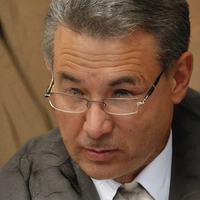
Chasing the dream of becoming a doctor is tough enough, but the real confusion kicks in after you clear NEET and start thinking, “Which MBBS specialty actually pays the most?” Money isn’t everything, but let’s be real—it helps when you’re putting in years of study, sleepless nights, and handling family expectations.
The truth? Not all doctors make the same kind of money. Your paycheck depends hugely on which branch you pick after MBBS. Some specialties rake in crazy high salaries, while others might bring you more job satisfaction but less cash in the bank. It gets even trickier because what doctors earn in a top-tier metro hospital can be totally different from what someone makes in a small town private practice.
If you’re stressing about your future earnings, or wondering if you should pick a branch for passion or pay, you’re not alone. I’ve seen friends agonize over this right up until NEET PG counseling. Stick around, and you’ll get fact-based answers, not vague hype. Let’s start unpacking what highest paid really means in medicine these days.
- What Does Highest Paid Really Mean in Medicine?
- Top-Paying MBBS Branches in India
- Why Some Specialties Pay More Than Others
- How to Max Your Earnings After MBBS
- Choosing Money vs Your Passion
What Does Highest Paid Really Mean in Medicine?
When people search for the highest paid branch after MBBS, they usually picture doctors swimming in cash, luxury cars, fancy homes—the Bollywood version of success. But actual earnings in medicine aren’t that simple. What counts as ‘highest paid’ depends on a bunch of things. Let’s break it down before chasing those NEET dreams.
First, your salary isn’t fixed just because you picked a certain medical specialty. Where you practice, how much you invest in learning, your patient base, and your position—junior, consultant, super-specialist—all stack up to shape your bank balance.
- Location matters a lot. Metro cities like Mumbai, Delhi, and Bengaluru usually pay more than small towns. Private hospitals offer fatter paychecks, but so does setting up a successful private clinic.
- Experience climbs hand-in-hand with pay. A fresh MD from AIIMS will not earn like a senior surgeon with 20 years on the job.
- Specialization & skills are key. High-risk branches (like neurosurgery or cardiology) often pay more because of what’s at stake and the intense work hours.
- Government vs Private: A government job feels secure but usually pays less than big-name private hospitals or running your own setup.
If you look at MBBS salary stats around India, the range is wild. Take these rough numbers for monthly salaries to see what I mean:
| Job Type | Fresh MBBS | Specialist/Consultant |
|---|---|---|
| Government Hospital | ₹60,000 - ₹1,00,000 | ₹1,00,000 - ₹2,50,000 |
| Private Hospital | ₹80,000 - ₹1,50,000 | ₹2,00,000 - ₹5,00,000 |
| Own Private Practice | Depends on patients | ₹3,00,000 - ₹15,00,000+ |
So if someone says ‘dermatology is highest paid’ but another says ‘radiologist earns more than most surgeons,’ they both might be right—for their city, experience, and hospital setup. It’s all about the mix.
One last thing: extra degrees after MBBS open bigger doors. A simple MBBS pays less than if you go for MD/MS, DM/MCh, or fellowships. So while salary matters, don’t ignore the journey you have to take just to reach that ‘highest paid’ spot in any branch.
Top-Paying MBBS Branches in India
If you’re aiming for the highest paid branch after MBBS, a few names always pop up. Some specialties straight up crush it when it comes to pay packages, both in private and (sometimes) in government settings. Here’s a real look at where the big money is, based on where my own batchmates landed and recent salary trends in 2024-2025.
- Radiology: Always at the top of the heap. Radiologists in metros can earn anywhere from ₹2 lakh to ₹5 lakh per month, sometimes more if they open their own diagnostic centers. Even in smaller cities, pay stays high because the demand keeps growing.
- Orthopedics: Specialists in bones, joints, and trauma do very well, especially in busy hospitals or if they start their own clinics. Starting salaries after PG can hit ₹1.5 lakh-₹3 lakh/month, but established ones can go much higher, especially with surgeries.
- Dermatology: This branch brings a subtle advantage—less emergency duty, more repeat patients, and amazing private practice potential. Top dermatologists easily make ₹2-₹4 lakh/month and skin care clinics really rake in profits in urban areas.
- Cardiology: Super-specialization is key here. You need to slog through DM after MD, but the rewards are wild. Private cardiologists can earn ₹4 lakh-₹10 lakh/month plus extras from procedures, though it’s a long road to get there.
- Gastroenterology and Neurology: Like cardiology, you need DM, but private gastroenterologists and neurologists are some of the most sought after. Packages range from ₹3 lakh to even ₹8 lakh/month once you’re established.
| Specialty | Typical Starting Salary (after PG) | Potential Earnings (in top cities) |
|---|---|---|
| Radiology | ₹2-3 lakh/month | ₹5+ lakh/month |
| Orthopedics | ₹1.5-2.5 lakh/month | ₹5+ lakh/month (surgeons) |
| Dermatology | ₹2 lakh/month | ₹4+ lakh/month |
| Cardiology | ₹2.5-4 lakh/month | ₹10+ lakh/month |
| Gastro/Neuro (DM) | ₹3 lakh/month | ₹8+ lakh/month |
Notice a pattern? The “highest paid” gigs aren’t just about MBBS—you need a good NEET PG rank to get these branched super specialties. Private sector pays more nearly everywhere, but top MBBS branches pull strong government salaries too, plus big perks in well-funded hospitals.
One more thing: a few newer fields like Emergency Medicine and Interventional Radiology are on the rise and could soon join this list. But as of now, radiology and surgical branches still lead in the top-paying MBBS branches race in India.

Why Some Specialties Pay More Than Others
Ever wondered why a surgeon often takes home more than a general practitioner? Or why radiologists and dermatologists have a reputation for being some of the highest earners? It’s not just luck. There are real reasons behind those salary differences in the MBBS world.
First up, demand and supply drives salaries in medicine just like it does for engineers and coders. Super-specialties like neurosurgery or cardiology need way more years of study, are much tougher to crack in NEET PG, and have less competition because not everyone can handle the intensity. Fewer specialists in the field means hospitals (especially private ones) pay more to attract top talent.
Another big factor? Skill level and risk. Procedures like open-heart surgery or organ transplants aren’t just complicated—they can be life-or-death. There’s more responsibility, and that reflects in the paycheck. Compare that to something like preventive medicine or basic general practice, where the risks (and rewards) are usually lower.
Let’s talk about private vs government sector. Docs in private hospitals usually make more, especially in metros like Mumbai, Delhi, or Bangalore, thanks to higher-paying patients and medical tourism. On the flip side, government doctors get job security, decent hours, but the fixed salary is usually less, no matter your specialty.
Take a look at how these factors shake up real salaries in India:
| Specialty | Average Monthly Salary (Private) | Average Monthly Salary (Govt.) |
|---|---|---|
| Cardiology | ₹2.5 – 5 lakh | ₹1.2 – 2 lakh |
| General Surgery | ₹1.5 – 3 lakh | ₹1 – 1.5 lakh |
| Dermatology | ₹2 – 3.5 lakh | ₹1 – 1.3 lakh |
| Pediatrics | ₹1 – 2 lakh | ₹80,000 – 1 lakh |
Notice how the highest paid branch after MBBS is usually a combo of high skill, high demand, and the power to work in a city with good-paying patients or in a big private setup. A few more things can tip the scales too:
- Location: Jobs in Tier 1 cities pay more than smaller towns.
- Sub-specialization: Extra training in fields like interventional radiology or plastic surgery means you can charge a lot more.
- Years of experience: Seasoned specialists often build a loyal patient crowd, which adds to their earnings over time.
So the next time you hear about doctors making sky-high salaries, remember it’s not random. There’s a tight connection between your branch, your skill, the risks you take, and where you work. Smart choices matter after NEET—not just cracking the exam itself.
How to Max Your Earnings After MBBS
If you want to boost your earning power after MBBS, you need more than just a medical degree. The highest paid branch goes hand-in-hand with a few key choices and actions, not just luck. Here’s how you can set the stage for serious money as a doctor in India:
- Crack NEET PG with a Top Rank: The branches everyone wants—like radiology, dermatology, and cardiology—need super high ranks. The higher your score, the better your shot at high-paying specialties.
- Pursue In-Demand Super-Specializations: After MBBS, keep going. DM, MCh, or even diploma courses in hot areas like interventional radiology, neurosurgery, or pediatric cardiology can push your salary way past the basic MD/MS crowd.
- Choose Private Over Government: Let’s be real—private hospitals and corporate chains generally pay a lot more than government hospitals, especially for young specialists just starting out.
- Location, Location, Location: Urban centers (Delhi, Mumbai, Bangalore) see specialists earning probably 2-3 times more than what’s possible in tier-2 or rural spots. Consider where you want to set up shop.
- Open a Private Practice: Takes guts and hustle, but owning your own clinic can grow your income over time. Specialists like dermatologists, ophthalmologists, and cosmetic surgeons often see big jumps in earnings by going this route.
- Keep Up with Skills and Technology: Doctors who invest in new skills—like laser treatments, robotic surgery, advanced imaging—get better salaries. Hospitals love tech-savvy pros. It’s worth signing up for certified workshops and fellowships that set you apart.
- Consult, Don’t Just Work Full-Time: Many make extra cash by consulting for multiple hospitals, telemedicine, or taking up side gigs on health apps. It’s a legit way to increase your monthly take-home.
Need a clearer picture? Here’s a quick snapshot of how average starting salaries stack up in different scenarios (2024 numbers):
| Setting / Role | Average Monthly Salary (INR) |
|---|---|
| Govt. MBBS Doctor (straight after internship) | 60,000 - 80,000 |
| Private Specialist (fresher) | 1,20,000 - 2,50,000 |
| Super-specialist (private metro hospital) | 2,50,000 - 5,00,000+ |
| Private Clinic Owner (specialist) | (Varies, but 2,00,000+ is common) |
The biggest tip? Don’t stop learning after MBBS. The best-paid doctors never get complacent—they level up their qualifications, skills, and networks. If that’s your plan, there’s no reason you can’t hit the top of the medical salary ladder.

Choosing Money vs Your Passion
This is the classic dilemma after MBBS: should you follow the highest pay, or your true calling? Here’s the deal—you’ll hear endless debates at coaching centers and family dinners. Some say, “Pick dermatology, it’s chill and pays well.” Others swear by surgery for status and money. But a fat paycheck isn’t always the whole story, and job satisfaction matters more than you think in the long run.
Let’s lay it out clearly. High-paying branches like radiology, orthopedics, and cardiology do offer big earning potential, especially in private practice or corporate hospitals. For example, entry-level salaries for radiologists often start at ₹18–20 lakhs per year in cities, while experienced doctors can earn double or more. But cracking these branches means fierce NEET PG competition, really long training, and intense work hours.
On the flip side, branches like psychiatry or pediatrics can mean lower starting salaries (think ₹8–12 lakhs per year), but if you feel strongly about helping kids or mental health, that daily meaning is priceless. Not everyone is wired for long nights in the OT or dealing with demanding private patients.
You can see a simple comparison in this table, which highlights salary ranges and typical work-life balance in a few key MBBS branches:
| Branch | Typical Starting Salary (per year) | Work-Life Balance |
|---|---|---|
| Radiology | ₹18–22 lakhs | Excellent |
| Orthopedics | ₹15–20 lakhs | Challenging |
| General Surgery | ₹12–16 lakhs | Difficult |
| Pediatrics | ₹8–12 lakhs | Balanced |
| Psychiatry | ₹8–12 lakhs | Good |
Here’s something most people don’t mention: many doctors who choose branches for the money alone end up burning out. I have a cousin who jumped into surgery only for the pay, and now he envies his friends in dermatology for their relaxed schedules. If you've got real passion for a field, you’ll find ways to grow your practice—and your income—over time.
If you’re stuck, try this checklist before deciding:
- List what you actually enjoy about medicine (patient interaction, diagnostic puzzles, procedures, teaching, etc.).
- Talk to senior doctors in your target branches and ask about their daily life, not just salaries.
- Compare pay and work hours in your target city (it varies a lot between metros and tier-2 towns).
- Remember, you can always upskill, do fellowships, or branch into healthcare business later on.
The bottom line: money matters, but it shouldn’t be your only filter. Pick a medical specialty you can live with for decades, not just one you think will impress others or make for flashy earnings graphs. Careers are marathons, not sprints.
More Articles

Youngest Genius to Crack IIT JEE: A Tale of Dedication and Brilliance
The journey of the youngest individual to crack IIT JEE is a captivating story of talent, hard work, and perseverance. This article delves into the inspiring narrative of this extraordinary student while unraveling useful tips and insights about IIT JEE preparation. Readers will find valuable information regarding effective strategies and resources for aspiring candidates. It also highlights unique challenges faced by young aspirants, making it a beneficial read for students and educators alike.

Most In-Demand College Degrees for 2025
Discover the six university degrees that employers crave in 2025, their salaries, growth rates, and how to choose the right path for a stable, high‑paying career.

Understanding the Key Differences Between Coding and Programming
Ever wondered what makes coding different from programming? Dive into this article to understand how coding is the specific act of writing a script in a friendly language for computers, while programming encompasses a broader scope. With interesting facts and practical tips, you'll grasp the nuances between these terms often used interchangeably. Discover how coding forms a subset of programming and what skills are essential for each. Get ready to enhance your knowledge if you're stepping into the tech field!
